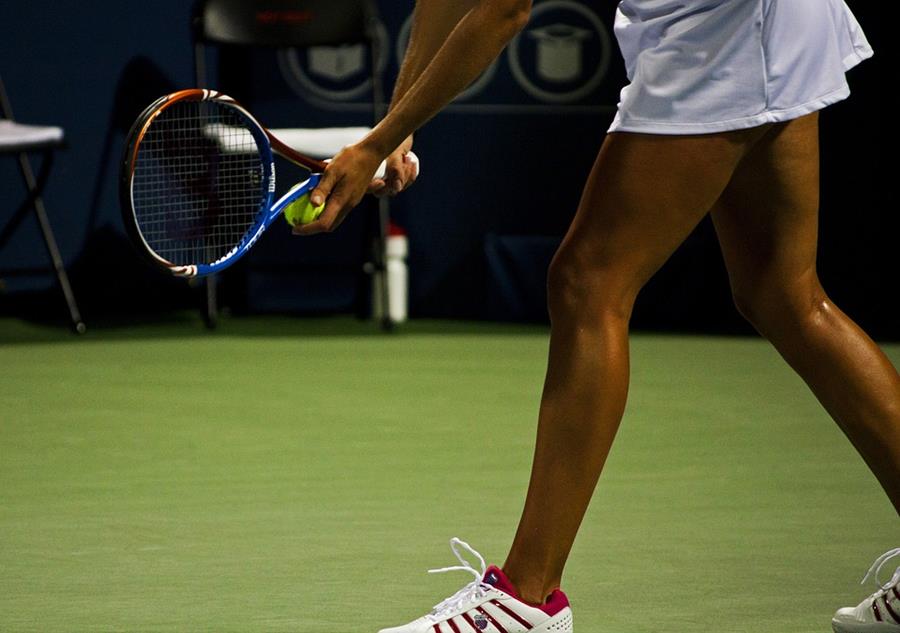The language of Wimbledon
26th July 2019
Wimbledon creates tonnes of excitement through the month of July. The tradition of white only outfits for the players, the £2.50 strawberries and cream and long queues at the gates.
Novak Djokovic, retained his Champion title in the Gentlemen’s Singles and Simona Halep won the Ladies Singles.
With the final behind us, we can reflect on the language used during this amazing tournament.

Origins of tennis
The word ‘tennis’ used to refer to what is now known as ‘real tennis’ or ‘court tennis’ in North America, a ball game of French origin played since medieval times on a purpose-built roofed, rectangle court.
Let’s take a trip down memory lane. Henry V received a tennis ball as a gift from the Dauphin of France with the suggestion that playing tennis was a more suitable occupation for him than making war. In his response the King’s said that he brought his own tennis balls, made ‘of marble and yren [iron]’, to use against the French port of Harfleur. The subsequent cannon fire is presented as though it is a game of tennis. It is then scored accordingly, fifteen, thirty, forty-five*—the earliest known evidence for this scoring system in English.
The modern game of tennis emerged in the 1870s. Major Walter Wingfield’s ‘game of sphairistike, or lawn tennis’, originated in 1874 and the first national championship was held at Wimbledon in 1877.
The player’s task is to stand at the baseline and hit the ball over the net so that it bounces in the opponent’s service box. The players are permitted two attempts: ‘first serve’ and ‘second serve’.
Here are some other popular tennis terms
Serve – is a shot to start a point.
Ace – is a legal serve that is not touched by the receiver, winning the point.
Backhand – stroke in which the ball is hit with the back of the racket hand facing the ball at the moment of contact.
Bagel – an informal term for winning or losing a set 6–0 (zero being as round as a bagel).
Ball boy and ball girl – most commonly a child who retrieves the tennis ball that have gone out of play and supplying the balls to the players before their service.
Ball toss – throwing the ball up in the air prior serve
Breadstick – an informal term for winning or losing a set 6-1 (one being as straight as a breadstick).
Bunt – using the power of the opponent’s shot and hitting it back with a short swing.
Cannonball – fast, flat serve.
Carpet – the surface of the tennis court.
Carve – to hit a groundstroke shot with a combination of sidespin and underspin.
Chip – blocking a shot with underspin, creating a low trajectory.
Chop – shot hit with extreme underspin, opposite of topspin.
Deuce – the score of 40–40 in a game.
Dink – shot will little pace.
Golden set – set which is won without dropping a single point.
Jamming – serving or returning straight to the opponent’s body.
Lob – stroke in which the ball is hit high above the net.
Smash – to hit the ball with great force.
Whiff – a stroke in which the player misses the ball completely. Whiffing a serve is considered a fault in an official match.
Interesting FAQs about Wimbledon
- Serena Williams and Josh Iser served most Aces.
- There are around 250 ball girls and ball boys, selected out of 1000.
- Slazenger has been the Official Supplier of tennis balls to The Championships since 1902.
- The “predominately in white” rule was introduced in 1963 before the “almost entirely in white rule” was brought in in 1995.
- There are 39,000 spectators in the Grounds at any one time.
- 2,195kg of bananas are consumed each year and 76,603 ice creams
- The longest match took 11 hours 5 mins and was played over three day between John Isner (USA) and Nicolas Mahut (FRA). 123 balls were used. Mahut won.


